Food Review: Pangium At Singapore Botanic Gardens | Gorgeous Contemporary Straits Cuisine Restaurant By Candlenut Chef-Owner Malcolm Lee
The Place How often do we get a standalone restaurant in Singapore, not to mention one which is nestled in a UNESCO World Heritage Site? I admit that the setting of newly opened restaurant Pangium is half the reason I am keen to check it out amongst the many new restaurant openings.
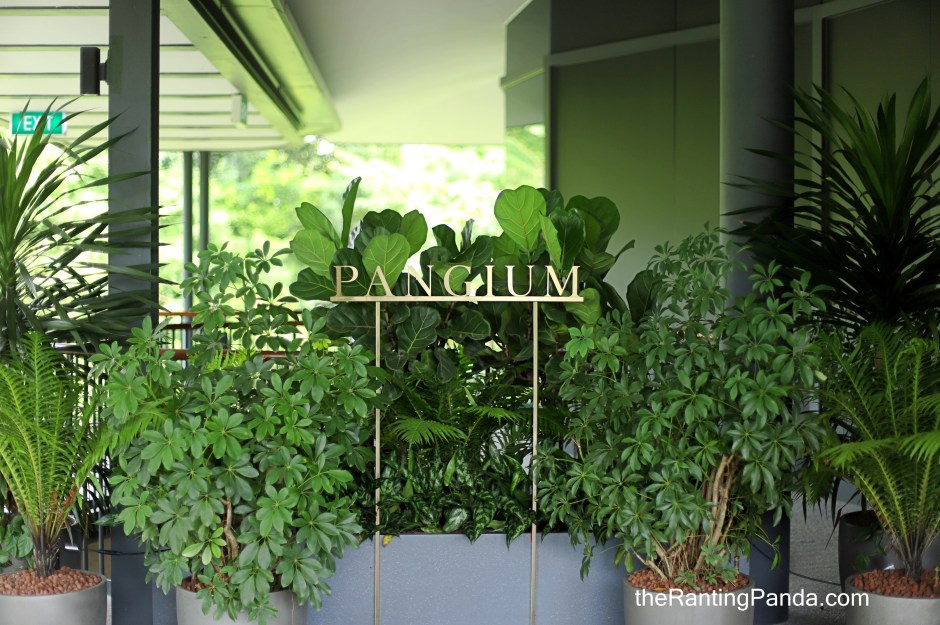
Located within The Orangery at the Gallop Extension of the Singapore Botanic Gardens, a private road leads the path to Pangium, a beautiful space surrounded by lush greenery by Chef-Owner Malcolm Lee and the COMO Group. Chef Malcolm is also behind Candlenut, a One-Michelin star Peranakan restaurant in Dempsey.


The name Pangium stems (no pun intended) from the pangium tree which produces the buah keluak seed, though this is by no means branded as a Peranakan restaurant. Instead, the tasting menu-only restaurant explores Straits Cuisine through a contemporary lens.

I love the space of Pangium. It reminds me of Noma in Copenhagen, a destination dining sort of idea where a sole restaurant stands on an island.

I appreciate that the tables are well-spread out, which offers more dining privacy.
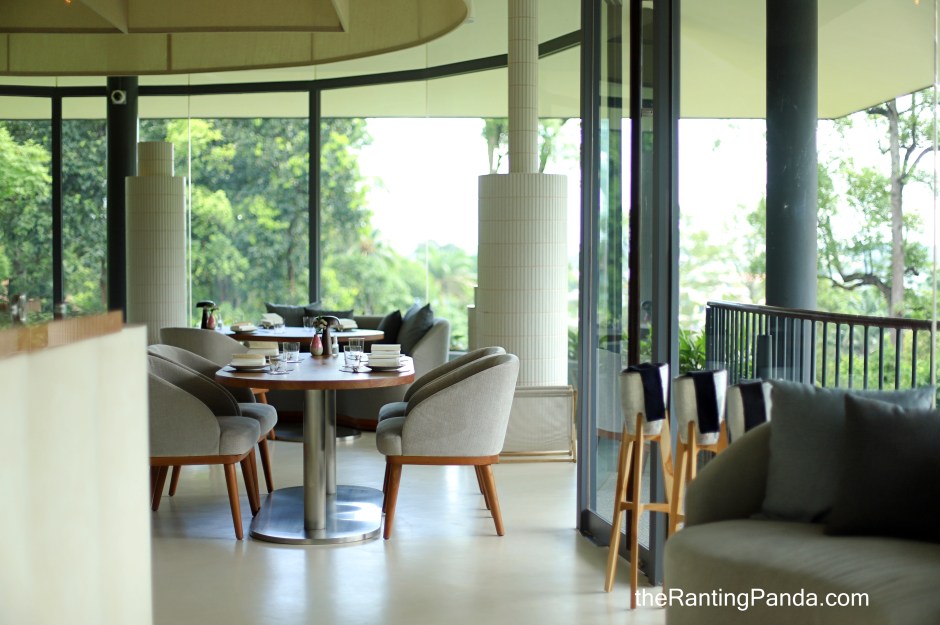
In the day, the full glass to ceiling window panes lends a nice natural light setting combined with the greenery. It feels serene.
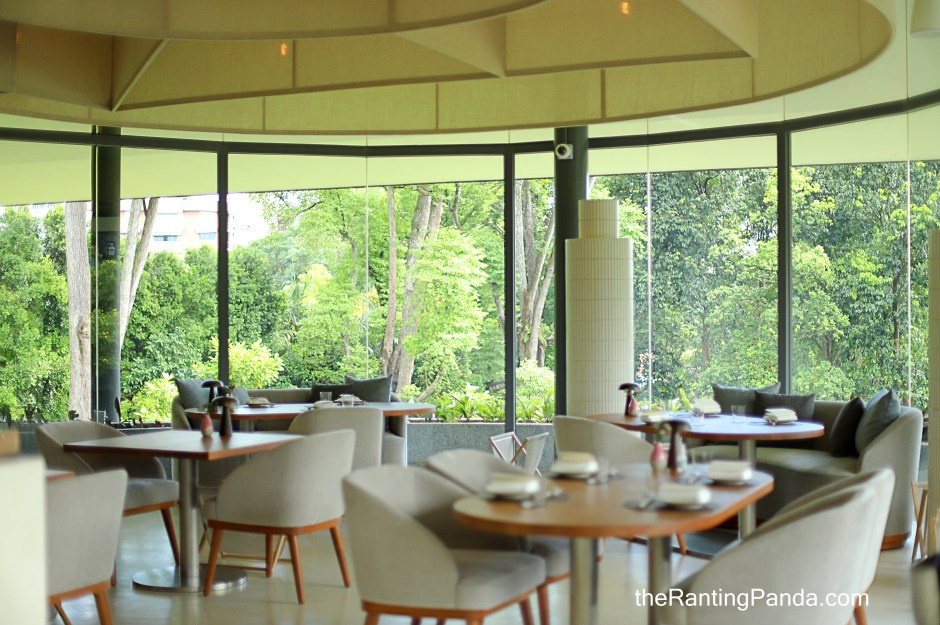
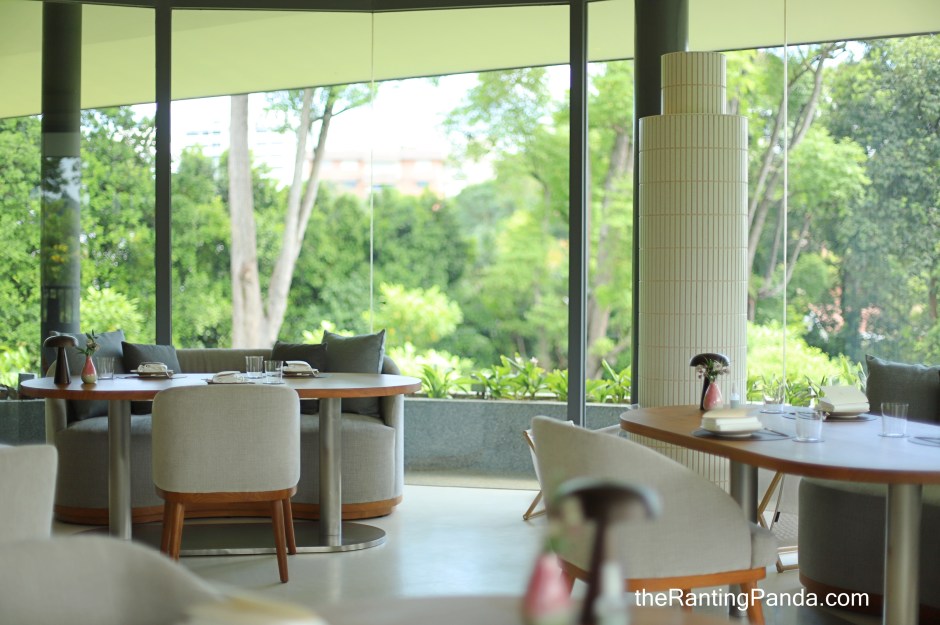
The Food Contemporary Straits cuisine is the ethos at Pangium. I had a chat with the staff, and this is by no means a Peranakan restaurant. There is only one tasting menu for Lunch (S$198) and Dinner (S$258), and I chose to go for lunch where I feel that the daylight does more justice to the dining space.
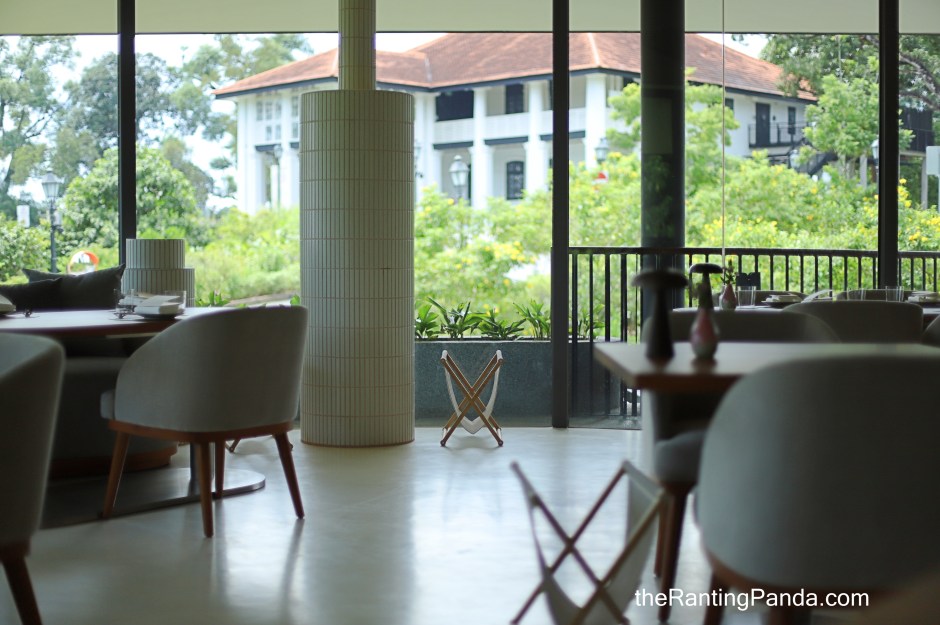
The meal started off with a series of snacks, which are familiar names given a modern twist – Kueh Pie Tee, Keropok, Ngoh Hiang and Mee Sua Kueh. I started with the Kueh Pie Tee where the shell is house-made. It is filled with fresh bamboo shoot, dried cuttlefish and crab meat along with chilli sauce.

The Keropok is delicious, where each diner gets about three pieces. It is crispy and not greasy at all, and it takes a painstaking three days to prepare. This is made from red tail sea prawn along with prawn salt and seaweed, and you do get the fresh prawn flavour here.

The familiar Ngoh Hiang is stuffed with pork, abalone, shiitake mushroom, water chestnut and abalone ‘tee cheo’.
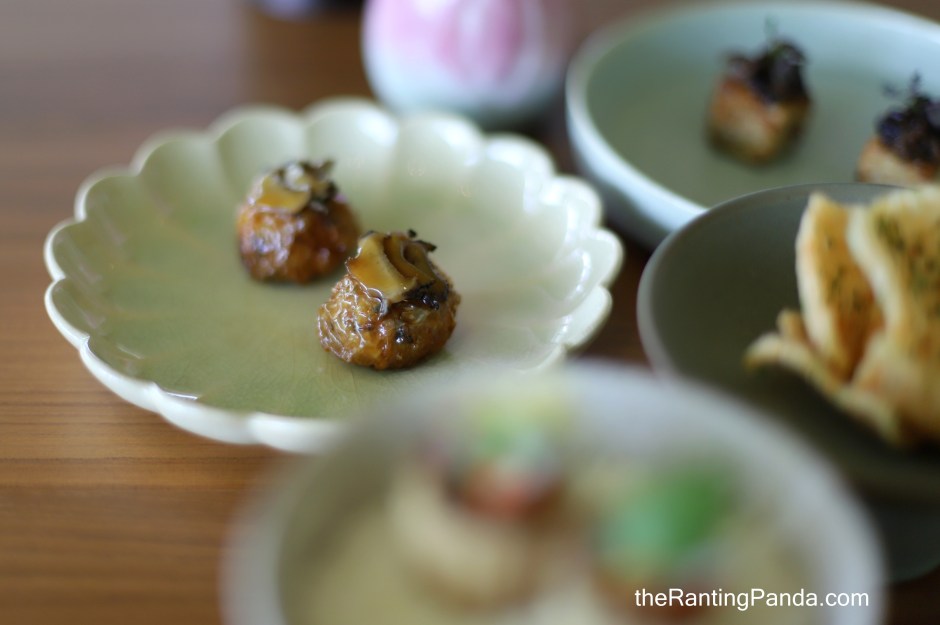
Lastly, I had the Mee Sua Kueh, a unique snack in Singapore’s context. You get flavours of dried Hokkaido scallop, sakura ebi, dried oyster and it is topped with tea tree mushroom sea urchin sauce.
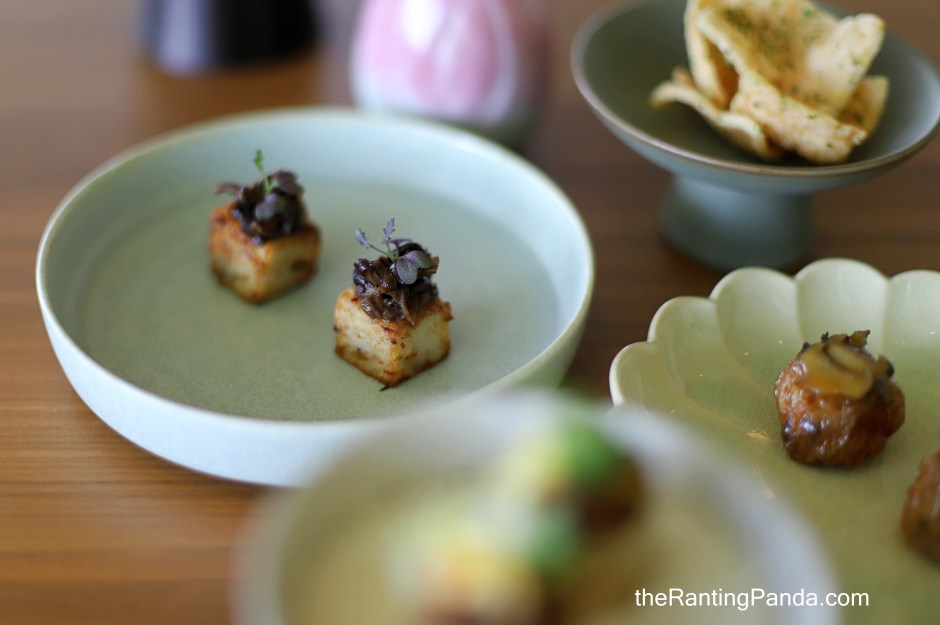
The first course proper is the Pang Susi, inspired from Eurasian-style sweet potato buns. This is like an Asian bread course, and it looks just like a ‘bolo bun’. Made with a sugar crust and stuffed with Iberico pork cheek, white kampot pepper, candied winter melon and roasted coriander seed, it is so good that I shamelessly asked if it can be refilled. As expected, I did not have my way.
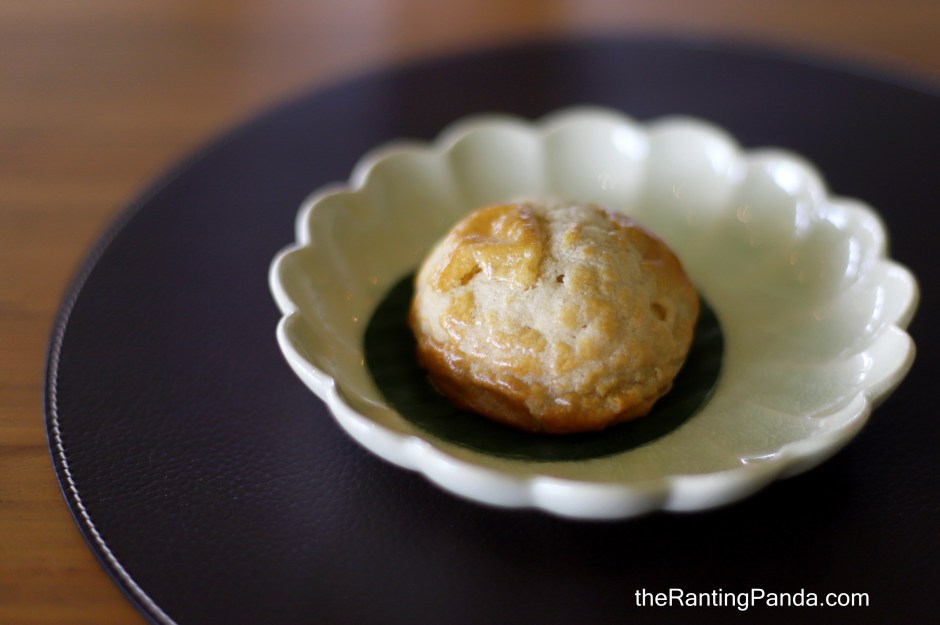
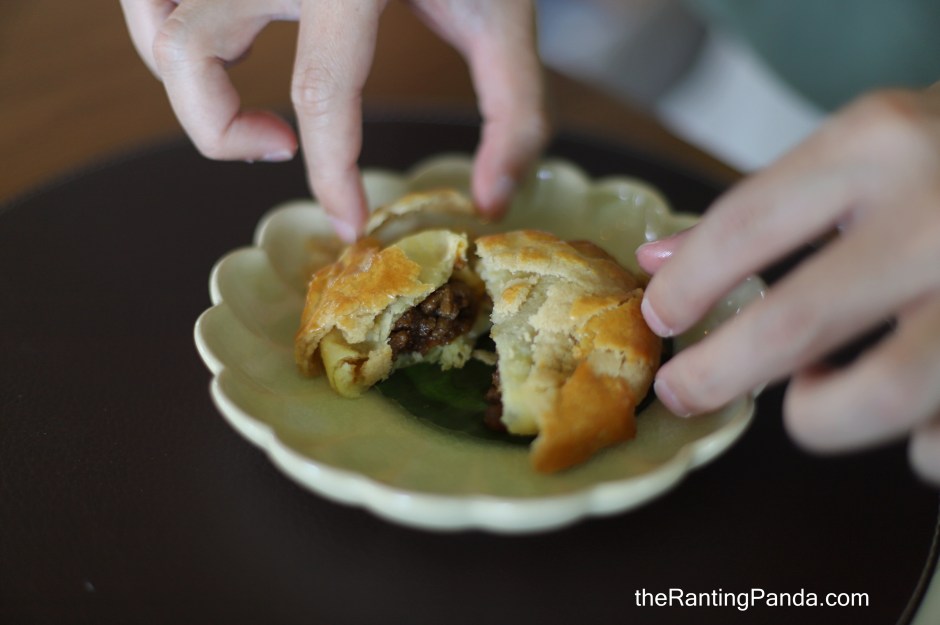
Next up was the Hee Peow Soup, a collagen-rich broth made up of lion’s head meatball, fish omelette and ‘hua jiao’ which is also known as fish maw. The rich broth is made from old hen chicken and is boiled for more than six hours, where the meatball is really delicious as it is made with hand-minced pork belly. There is also Japanese vegetables in the soup, along with thin, delicate shreds of fish omelette wrapped with fish paste.
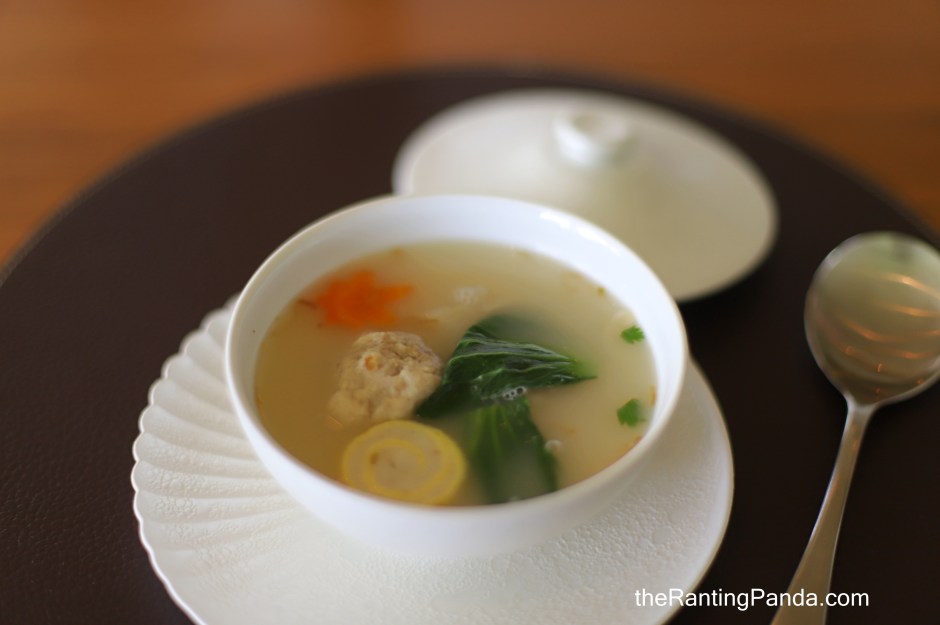

For the protein course, I had the Ikan Chuan Chuan. I was not able to imagine how this dish would turn out from its name initially, but the presentation does look like a regular fish course. The fish used is the glacier 51 tooth fish along with Bentong ginger from Malaysia, ‘tau cheo’, lily bud and young spinach. Not much of a surprise here in terms of flavour, and I was drawn to the lily bud which is tied with multiple knots.

The difference between Pangium and other fine-dining experience is that the dishes are not served course by course. Instead, for the next course, it feels like a mini ‘tok panjang’, expect that it is served on an individual basis.

The main carb dish here is the Nasi Kuning which uses Japanese rice “koshihikari”, presented on a wooden tray along with other delectable small plates. There are the likes of Sayur Lodeh with organic tempeh with Japanese vegetables; Westholme Wagyu Beef Short Rib with incubator pumpkin; and Oxtail Buah Keluak Sambal with serunding daging.

Served separately on a mini grill is the Grilled Hokkaido Scallop Satay, one of my favourites of the side dishes presented. Plump scallops grilled with dark sauce, this is definitely an elevated version of satay.

The side dishes do not end here. There are also other small bites and condiments such as the Bergedil, sunny-side up quail egg, dried squid sambal tumis; Jumbu, lotus root, guava, starfruit achar; Sambal tempoyak kuning; Kerabu jantung pisang; and to go with the rice, Sambal belachan.

The best way to appreciate all the mini dishes is to have a little on its own, before having it with the rice. The Nasi Kuning is really good, not overly rich yet delicious enough for me to succumb to a refill of the rice. Overall, I think the portion of each component here is just right, and while it looks overwhelming, you get a very balanced flavour profile.

On to desserts, I first had the Musk Melon Sago. This is a combination of bird’s nest, yuba, sago and coconut water shaved ice. It is a milk base at the bottom, and it does remind me a little of a mini-ice kacang which is refreshing.

Next up was the Sagun, Young Coconut Sorbet. The toasted coconut is blended with glutinous rice, so good!

The last part of the dessert is the part which excites me most, a series of Kuehs and Sweets. Four petite size items are presented here – Ondeh Ondeh, Keuh Bingkah, Pandan Kueh Ambon and Buah Keluak bonbon.
My favourite of the lot is the Ondeh Ondeh, which is a surprise for me as I usually find this too sweet. However, the version at Pangium is blended with Japanese pumpkin, so you get a really robust flavour less the in-your-face sugar rush.

That is not to say the rest are less impressive. The Kueh Bingkah here is done the French canale style along with tapioca and caramelised coconut. The best parts are the crispy edges, so good!
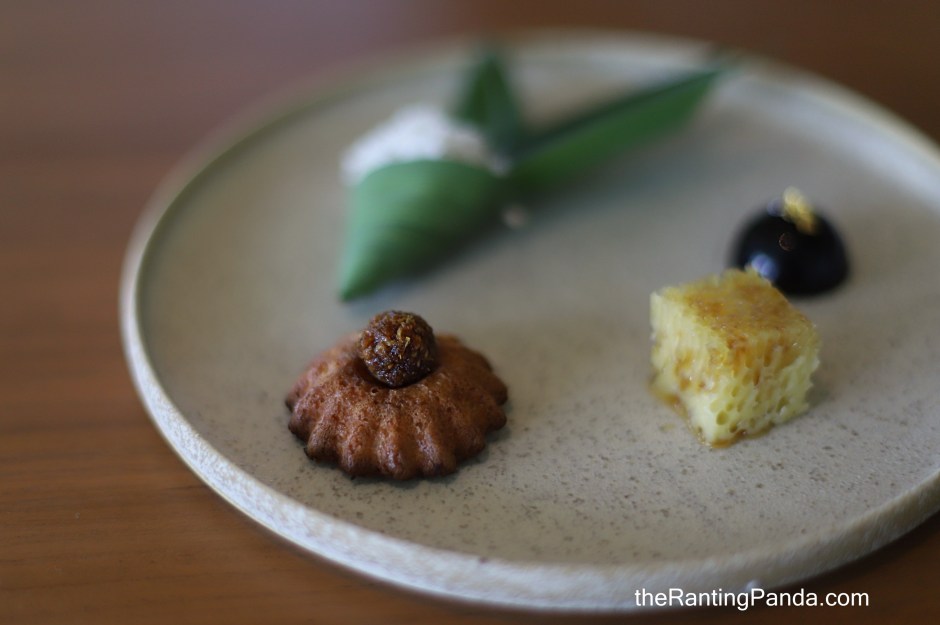
I also enjoyed the Pandan Kueh Ambon, which is infused with Rwanda Eucalyptus honey. Very exotic ingredients here!

The last bit is the Buah Keluak bonbon which uses Valrhona chocolate with salted caramel and a tinge of chilli. An intense finish to the meal!

Rants The beverage menu could have been more interesting in my option. For instance, with a Straits cuisine proposition, it would have been more interesting if the wine menu features labels from the region.
Will I Return Again? Overall, I enjoyed my dining experience at Pangium. It is rare to see Straits dishes elevated to such fine level in Singapore, or even in the region. Pangium is a destination dining given its exclusive and privileged location, a rare feat in Singapore’s land scarce context. And this is a destination worth making your way to and if the stars are aligned, I see a new Singapore Michelin restaurant in the making.
TheRantingPanda says:
Taste bud: 4.5/5
Hole in the pocket: 4/5
Ambience: 5/5
Overall Experience: 4.5/5
Pangium
11 Gallop Road, Gallop Entrance
Singapore Botanic Gardens
Singapore 259015
Opening Hours
Lunch – Saturday & Sunday: 12.00pm to 1.30pm (Last seating)
Dinner – Wednesday to Sunday: 6.30pm to 8.00pm (Last seating)
Closed on Monday & Tuesday
Ranted by The Ranter

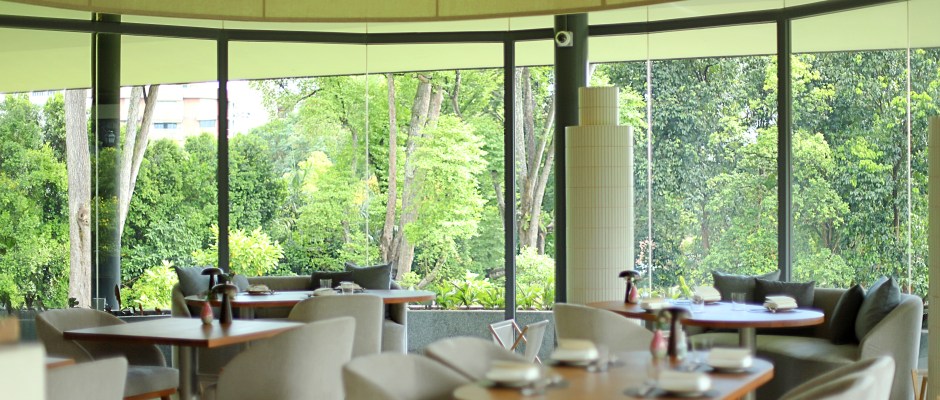

Rant here!